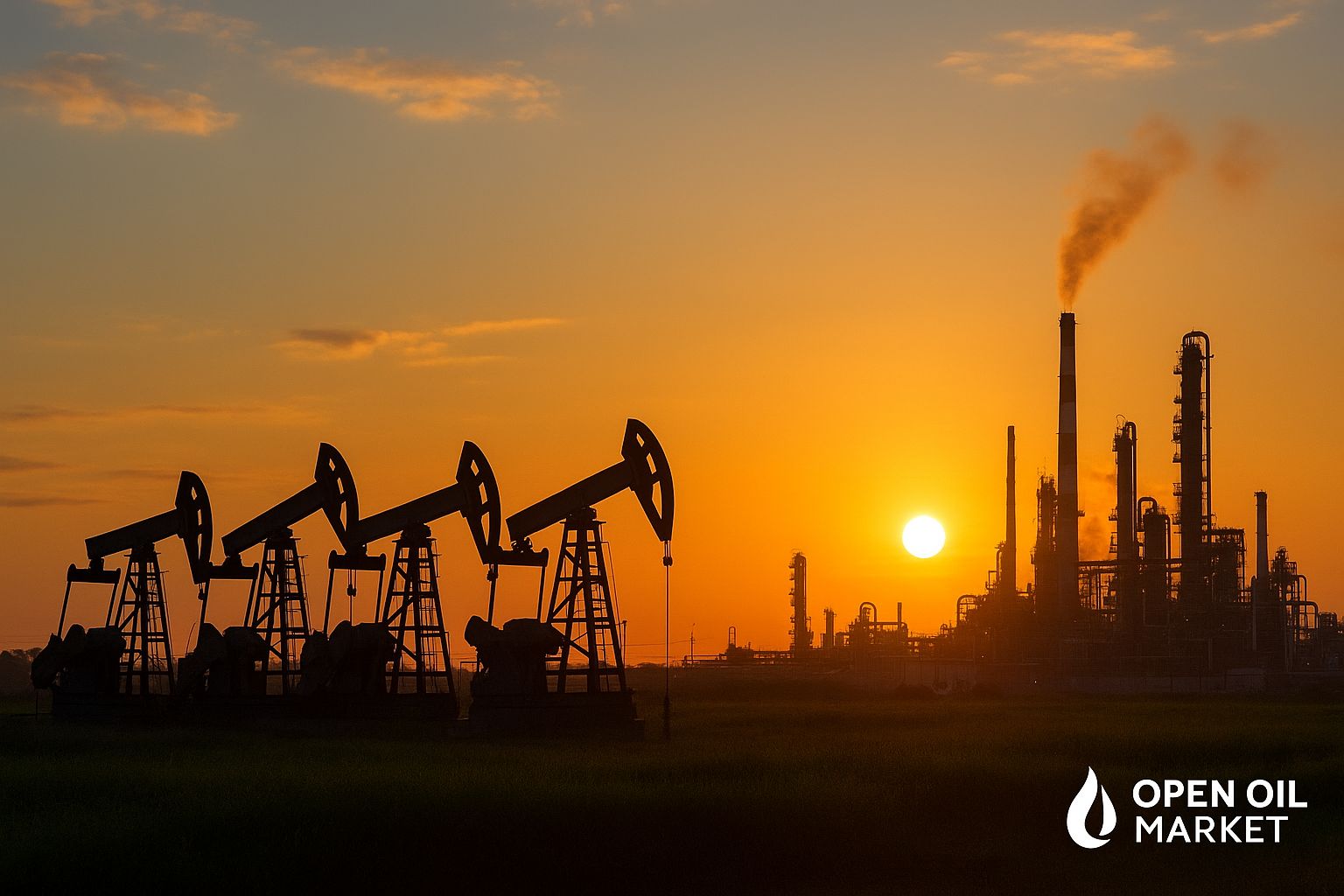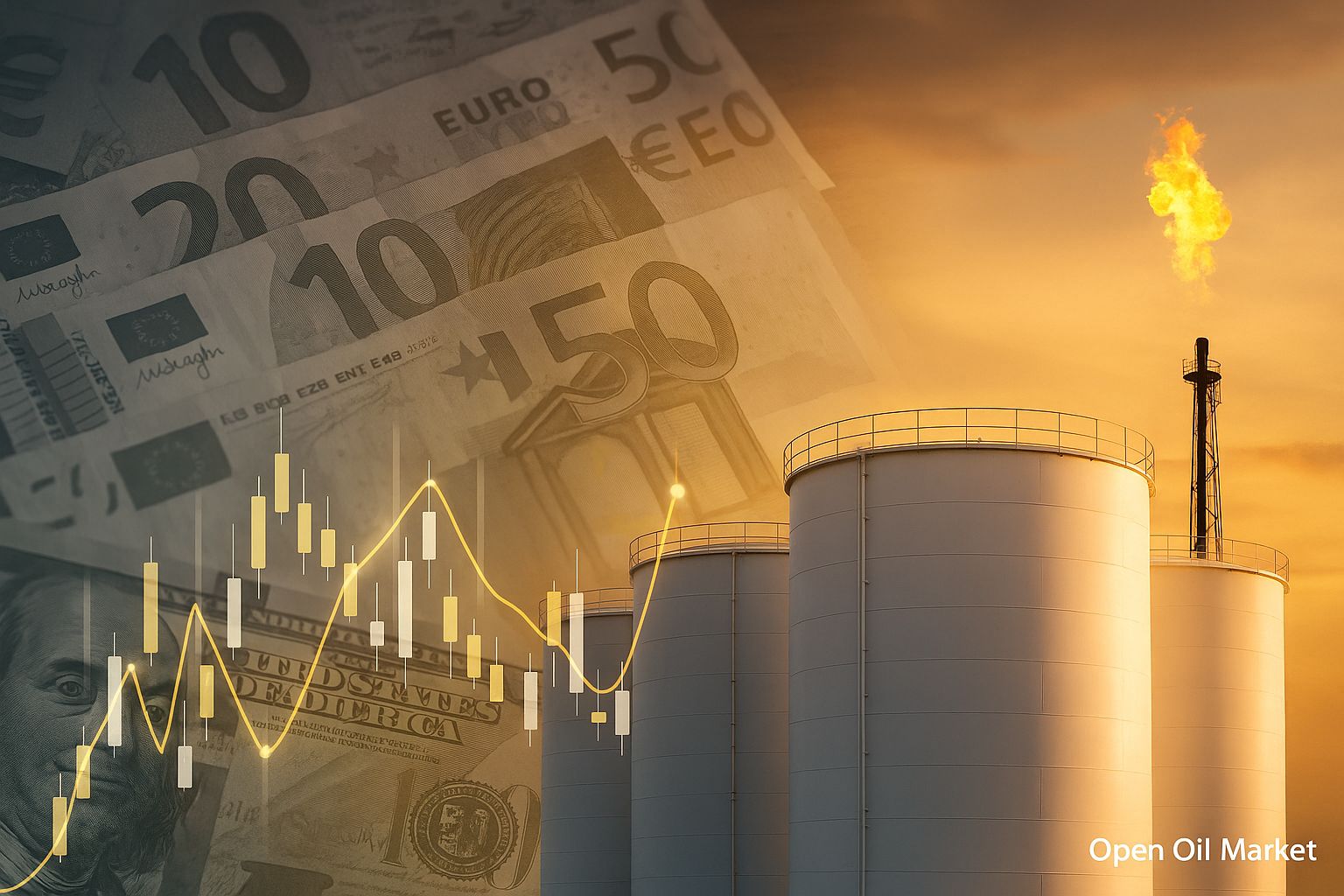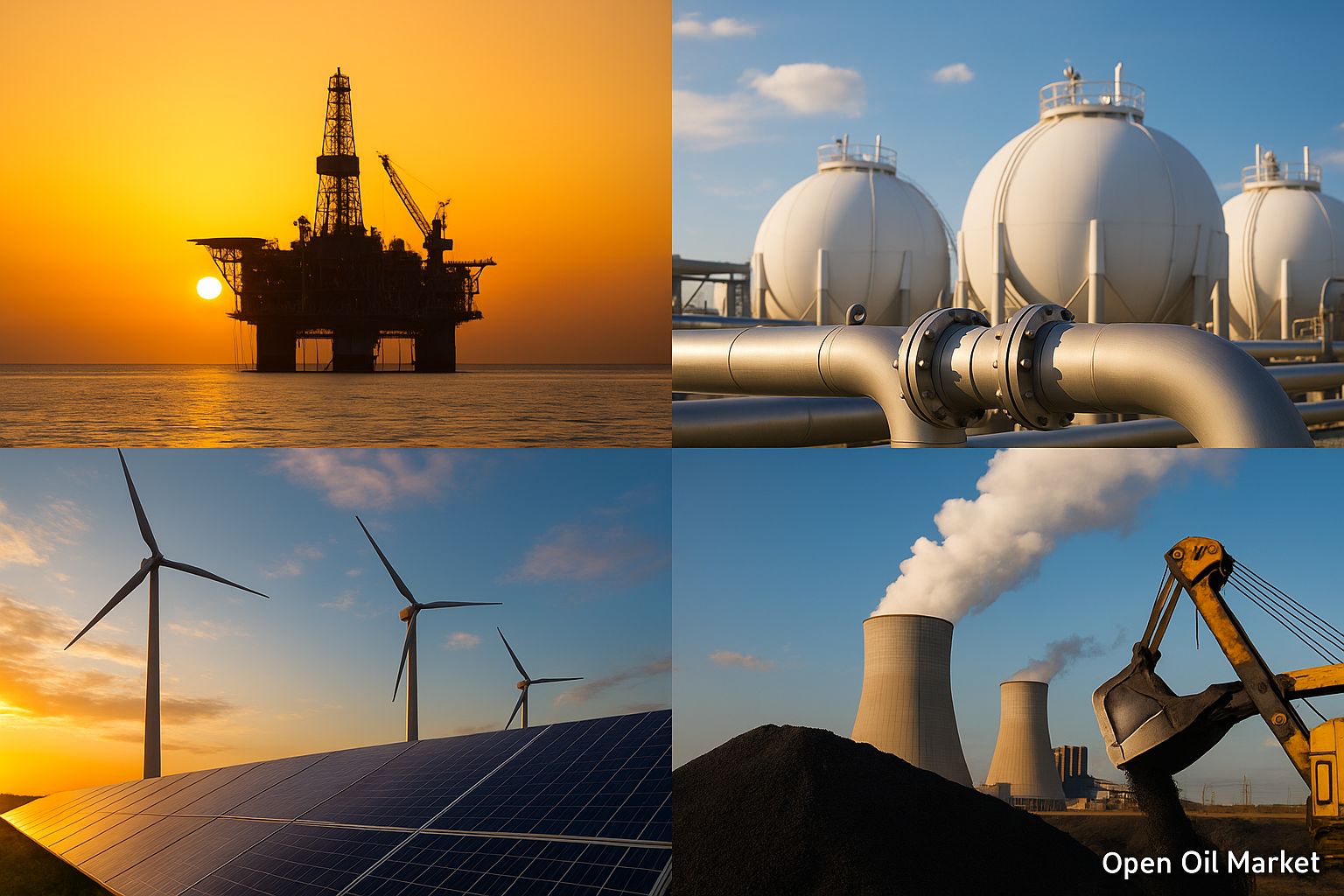
Global and Russian Fuel and Energy Sector News as of October 26, 2025: Intensifying Sanctions, Confident Preparation for Winter, Renewable Energy Records, and Stabilization of the Russian Oil Products Market.
Current events in the fuel and energy sector (FES) as of October 26, 2025, unfold against the backdrop of intensified sanctions between Russia and the West, as well as the approaching winter season. The sanctions confrontation has escalated: the United States has imposed direct restrictions this week against leading Russian oil and gas companies, urging allies to completely abandon trade in Russian energy resources. It has been reported that India and China are prepared to reduce their purchases of Russian oil under external pressure—although New Delhi and Beijing have not officially confirmed such plans, the mere signaling of this nature adds uncertainty to the market. Meanwhile, the European Union is tightening its sanctions regime, closing remaining loopholes (including a ban on re-exporting oil products made from Russian crude through third countries).
At the same time, global commodity markets are displaying relative stability. Oil prices, after briefly falling below $60 per barrel for Brent, remain in the $60–62 range due to abundant supply. The European gas market is entering winter with record fuel reserves (underground storage facilities are over 95% full), which has allowed gas prices to drop to a comfortable level (TTF index around €30 per MWh)—assuming mild weather conditions. Against this backdrop, the global energy transition continues to accelerate: investments in renewable energy are hitting records, and the share of clean sources in global generation is steadily increasing, although oil, gas, and coal remain critically important for meeting demand.
In Russia, the internal fuel market situation has notably stabilized after emergency government measures. By mid-October, the acute shortage of gasoline and diesel that was observed at the end of summer has largely been alleviated: wholesale prices have retreated from peak levels, independent gas stations have resumed normal fuel sales, and supplies have returned to standard in most regions. Nonetheless, authorities continue to monitor the situation closely ahead of winter—maintaining restrictions on oil product exports and support measures for refineries to ensure uninterrupted supply to the domestic market. Below is a review of key news and trends in the oil, gas, electricity, renewable, and coal sectors, as well as the fuel market in Russia as of the current date.
Oil Market: Supply Surplus, Sanction Risks, and the Indian Factor
Global oil prices remain under pressure due to an oversupply and weakened demand. Brent hovers around multi-month lows (~$60 per barrel), significantly below levels from a month ago. The market anticipates that by the end of the year, oil supply will exceed demand: OPEC+ countries continue to increase production, while major producers outside the cartel (the U.S., Brazil, etc.) are producing record volumes. Meanwhile, consumption growth has slowed amid a weak economy in Europe and China and prior high prices, leading to an increase in global oil inventories, which exerts downward pressure on prices.
- New Sanctions and Geopolitics. Sanction pressure on the Russian oil sector has intensified: the U.S. has imposed sanctions against major Russian oil companies, urging allies to enact a complete embargo and thwart circumvention schemes (“shadow fleet” tankers). Military risks also persist—drone attacks on oil infrastructure in Russia continue to intermittently disable individual refineries. These factors contribute to market volatility: any escalation could reduce supply and trigger price spikes, despite the overall oil surplus.
- Reorientation of Flows: India Under Pressure. The largest buyer of Russian oil—India—may cut imports from Russia under Western influence. The share of Russian crude in Indian imports exceeded 30%, and withdrawing from it would force Moscow to seek new buyers or cut production. The projected volumes for India are estimated to be replaceable by suppliers from the Middle East, Africa, and the Americas, preventing a global deficit. However, for Russian oil companies, losing the Indian market would mean a decline in export revenue. News of a potential “turnaround” by India temporarily supported oil prices, but fundamental factors remain weak. Analysts believe that ~$60 per barrel for Brent currently represents a floor price: the supply surplus prevents significant increases, while sanction risks limit price declines. Oil companies and investors in this market are taking a cautious stance.
Natural Gas: Comfortable Winter in Europe and Eastern Reorientation for Russia
The European gas market is confidently approaching winter. EU underground storage is at record levels, creating a solid reserve for potential cold spells. This, combined with record LNG imports (with active shipments of liquefied gas from the U.S., Qatar, and other countries freed up due to reduced demand in Asia), has kept wholesale gas prices in the EU at low levels. The TTF index has stabilized around €30 per MWh—several times lower than the peaks of autumn 2022. The risk of gas shortages this winter has been significantly reduced, although it still depends on weather conditions and the stability of LNG supplies.
Meanwhile, Russia, having lost the European gas market, is accelerating the reorientation of exports to the East. Pipeline gas supplies to China via the Power of Siberia have reached record volumes, approaching projected capacity. At the same time, the Power of Siberia 2 pipeline project through Mongolia is advancing to further increase exports to Asia. Sales of Russian LNG are also increasing: with the launch of new lines in Yamal and Sakhalin, additional shipments of liquefied gas are being directed to China, India, and other countries. However, overall gas exports from Russia still remain below pre-sanction levels—the European market cannot yet be fully replaced. Gas companies are developing infrastructure and signing long-term contracts in Asia to solidify their presence in eastern markets.
Renewable Energy: Growth Records and Integration Challenges
Renewable energy sources will account for about a third of global electricity generation in 2025, nearing coal's generation levels for the first time. Investments in renewable energy are hitting historic records and have already surpassed investments in fossil fuels, fueled by active government incentives. However, the rapid growth of solar and wind generation also gives rise to challenges: energy systems require larger storage capacities and reserves, and the development of network infrastructure is not always keeping pace. In some regions, limited network capacity and a lack of specialists are delaying the commissioning of new renewable energy stations. Addressing these challenges is necessary for the continued sustainable growth of “green” energy.
Coal Sector: Demand in Asia and Accelerated Phase-Out in the West
There remains a high demand for coal in Asia, supporting the global market. In summer, due to abnormal heat and temporary production disruptions, China and other East Asian countries sharply increased coal imports for power plants—this has kept prices from falling. At the same time, developed economies are rapidly phasing out coal generation: old power plants are being closed, there are virtually no new projects, and coal's share in global electricity has already decreased to ~25%. Coal companies are profiting in Asian markets but must prepare for declining demand—diversifying their businesses and optimizing costs. Governments are developing programs to support coal-mining regions to mitigate the social consequences of the phase-out. The global trend indicates that coal's role will steadily decrease as climate agenda implementation progresses.
Russian Fuel Market: Crisis Mitigation and Internal Priority
By the end of October, the internal oil products market in Russia has improved after the fuel crisis of late summer. Emergency government measures taken in September-October have largely eliminated the shortage of gasoline and diesel: wholesale prices have decreased, gas stations have resumed normal fuel sales, and supplies in most regions have stabilized. To prevent another escalation, authorities have extended the complete ban on gasoline exports and strict restrictions on diesel exports until the end of the year. The fuel damper mechanism is also retained—the government will continue to compensate refiners for the difference between export and domestic prices, encouraging supplies to the domestic market. Oil companies have been recommended to maximize fuel production ahead of winter (postponing non-critical refinery repairs), and duties on imported gasoline and diesel have been eliminated until mid-2026 to attract additional resources if necessary. Additionally, price controls at gas stations have been tightened: the Federal Antimonopoly Service is curbing instances of unjustified price increases while avoiding direct administrative intervention.
As a result, the production of motor fuels in Russia has returned to normal, and domestic needs are now being fully met. The government claims that autumn measures will allow for a winter season free from gasoline and diesel supply disruptions. Export restrictions will only be lifted as the domestic market becomes sustainably saturated and fuel reserves are built up. Although oil companies are temporarily missing out on export revenues, losses are being offset by damper payments and the stabilization of domestic sales. The crisis of 2025 highlighted the need for modernization in the fuel sector—from expanding storage capacities and improving logistics to increasing the depth of oil processing. These areas are already under special government control to prevent similar situations in the future. Thus, the Russian fuel and energy sector is entering winter under intensified government oversight, and the internal stability of the fuel market is strengthening the confidence of market participants and investors.




